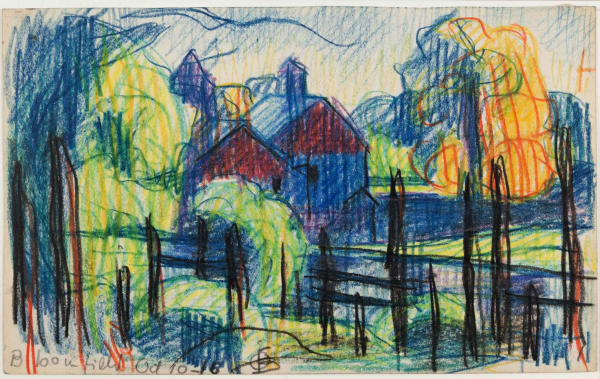Oscar Bluemner
Born in Germany, Bluemner trained as an architect and designer at the prestigious Royal Technical Academy in Berlin. Bluemner left Germany in 1892 and moved to Chicago where he was employed as a draftsman for the World’s Columbian Exposition. In 1901 Bluemner settled in New York and his successful design for New York’s Bronx Borough Courthouse in 1903 gave him widespread recognition.
In 1908 Bluemner met the influential American photographer, Alfred Stieglitz who introduced him to the art world, in particular the European and American avant-garde. By 1910 he realized his interest in architecture was diminishing and turned his full attention to painting. Bluemner's work was included in the legendary 1913 Armory Show as well as the first Whitney Biennial in 1932.
In the 1930s Bluemner created paintings for the WPA Federal Arts Project. Bluemner was a master of both oil and watercolors producing bold, expressive compositions reflecting his keen interest in the emotional power of color.
In 2005 the Whitney Museum of American Art organized a major retrospective, Oscar Bluemner: A Passion for Color, which served to reinvigorate the importance of his contribution. Bluemner is now widely acknowledged as a key player in the creation of American Modernism of the early 20th century.


